"....the scenery and the natural and historic objects and the wild life therein and to provide for the enjoyment of the same in such manner and by such means as will leave them unimpaired for the enjoyment of future generations."
As a result, the NPS protects a large and substantial collection of museum objects around the nation. Here are some interesting highlights related to World War II.
Video: Objects from the Aleutian Islands
Enjoy this video as it showcases some unique objects preserved in the Aleutian World War II museum. The video has no sound and features objects such a rifles, bayonets, and helmets along with black and white images from the Battle of the Aleutian Islands.-
Text: Rediscovery, Reinternment, Remembrance
TEXT: Rediscovery, Reinternment, Remembrance Long forgotten by most of the world, the African Burial Ground came to light in 1991. During the early construction phase for the federal office building at 290 Broadway, workers found human burials. Over the next two years, about an acre of the original 6.6-acre cemetery was excavated, and 419 skeletal remains were removed from the ground. Controversy immediately arose over the disturbance of the sacred ground and questions about whether the remains were being respectfully cared for. African descendants, clergy, politicians, scientists, historians, and concerned citizens united to halt the excavation. The protesters’ voices, petitions, and a 24-hour vigil at the site in 1992 succeeded. Congress acted to stop construction to allow time to alter the building plans to provide space for memorialization. The remains were transferred to Howard University in Washington, DC, for study at the Cobb Laboratory, one of the nation’s leading African American research institutions. Noted scholars and researchers conducted intense examination and analysis of the history, physical anthropology, and archeology of the burial ground site and the human remains. The careful study of each bone, fragment, and accompanying burial objects revealed a wealth of information about life and death for Africans in colonial New York.In October 2003, all 419 remains were placed in mahogany coffins from Ghana that were hand-carved and lined with Kente cloth. Thus began the six-day Rites of Ancestral Return, organized by the Schomburg Center for Research in Black Culture. The journey started at Howard University, where thousands attended the departure ceremony. The procession, greeted by crowds along the way, continued through Baltimore, Wilmington, Philadelphia, Newark, and Jersey City, and finally ended in New York City. The coffins were reinterred very near where the remains were originally found. Seven earthen mounds now mark this site. Meanwhile, community activists rallied to preserve part of the burial ground and commemorate African history and culture in New York City. Their efforts led to the creation of New York City’s first below-ground landmark in 1993. In April 2005 the design for the outdoor memorial was selected in a public review process managed by the National Park Service in partnership with the General Services Administration (GSA). At the center is a “cosmogram,” the crossroads of rebirth in Congo tradition. This contemporary architectural expression combines feminine and masculine forms and is inspired by art, music, painting, and sculpture. It is oriented toward the rising Sun along an east-west axis, the same way that the bodies were buried. Created by Presidential proclamation on February 27, 2006, and dedicated on October 5, 2007, the African Burial Ground National Monument is a place of remembrance. The people and their stories teach us how free and enslaved Africans contributed to the physical, cultural, and spiritual world of Lower Manhattan in colonial times — and to our nation’s beginning.
Virtual Museum Collections
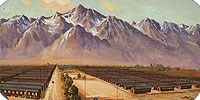
Each family was assigned an number and loaded into buses, trucks, and trains, taking only what they could carry. Japanese Americans were transported under military guard to 17 temporary centers located at racetracks, fairgrounds, and similar facilities in Washington, Oregon, California, and Arizona. Then they were moved to one of ten hastily built relocation centers. By November, 1942, the relocation was complete.
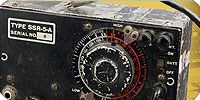
Though the wooded hamlet of Prince William Forest Park was far from the front lines, the park did play a significant role in World War II. In early 1942, President Franklin D. Roosevelt appointed lawyer and World War I Medal of Honor recipient William "Wild Bill" Donovan as the head of the Office of Strategic Servicers (OSS), America's first centralized intelligence agency.
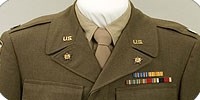
Virtual Media exhibit featuring the life of Dwight and Mamie Eisenhower.Dwight D. Eisenhower's military career spanned two world wars and a large part of the Cold War. His leadership as a general had a major impact on key world events.

Anna Eleanor Roosevelt (1884-1962) was the niece of President Theodore Roosevelt and the wife of President Franklin D. Roosevelt. Born into a privileged class, she became a successful social activist, party leader, teacher and journalist. By the time she entered the White House, these experiences and the networks she established helped her to transform the role of First Lady.
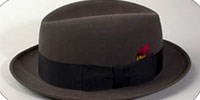
This exhibit celebrates Harry S Truman, an American Visionary. It highlights his formative years, family, increasing stature in Washington, the presidency, and return home.
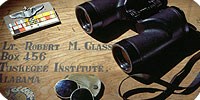
The school at Tuskegee founded by Booker T. Washington had a well-respected aeronautical engineering program. Because of the Institute's flight program, the U.S. military selected Tuskegee Institute as a place to train African-American pilots for the war effort. Aviators came to Tuskegee, Alabama, to hone their flying skills. Their rigorous training at Moton Field and Tuskegee Army Air Field molded over 1,000 pilots into one of the most highly respected U.S. fighter groups of World War II.
Last updated: August 8, 2017
